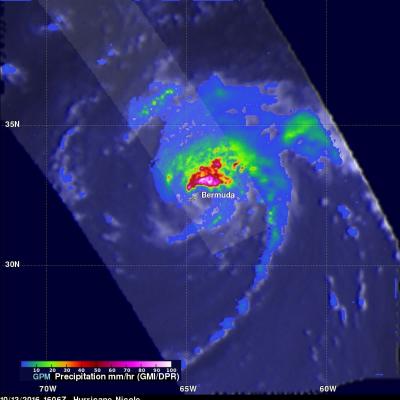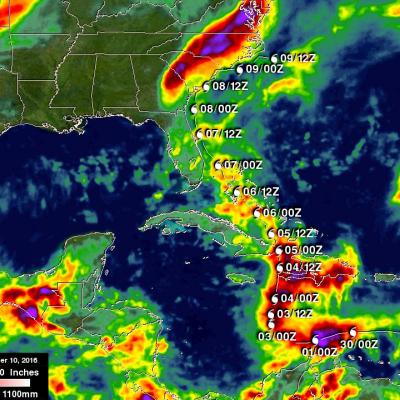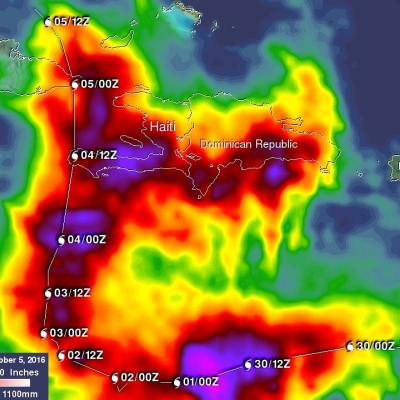Hurricane Nicole Moving Over Cold North Atlantic
Hurricane Nicole has now been active for almost two weeks. Nicole was still a hurricane with winds of about 70 kts (81 mph) when the GPM core observatory satellite flew over on October 17, 2016 at 0436 UTC (2:36 am EDT). The GPM satellite had a good look at the rainfall in Nicole's large ragged eye. GPM's Dual-Frequency Precipitation Radar (DPR) swath sliced through the center of Nicole's eye and found some very heavy rainfall. A few strong storms in the southern side of the eye were dropping rain at a rate of over 113 mm (4.4 inches) per hour. GPM's radar (DPR KU band) data collected with





